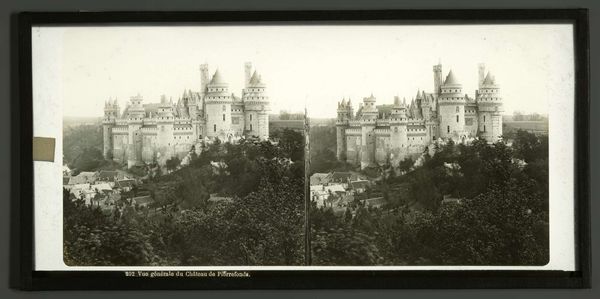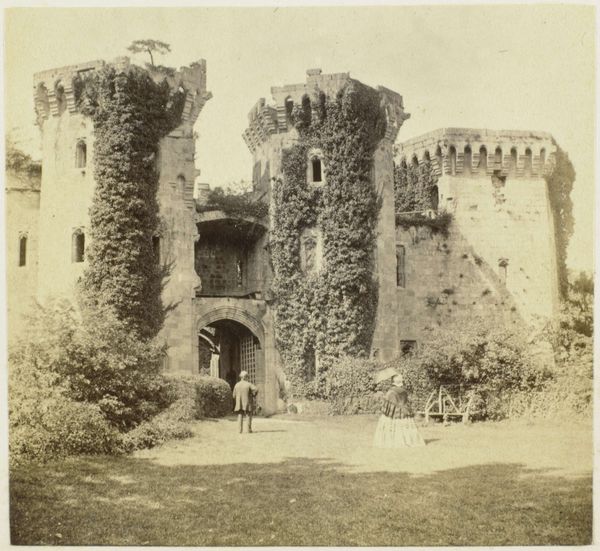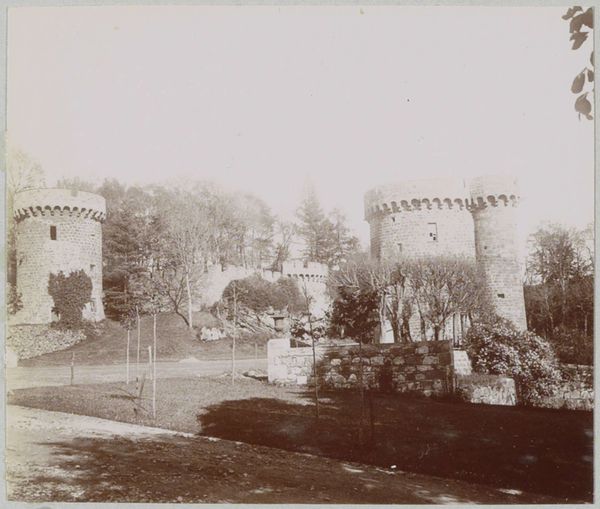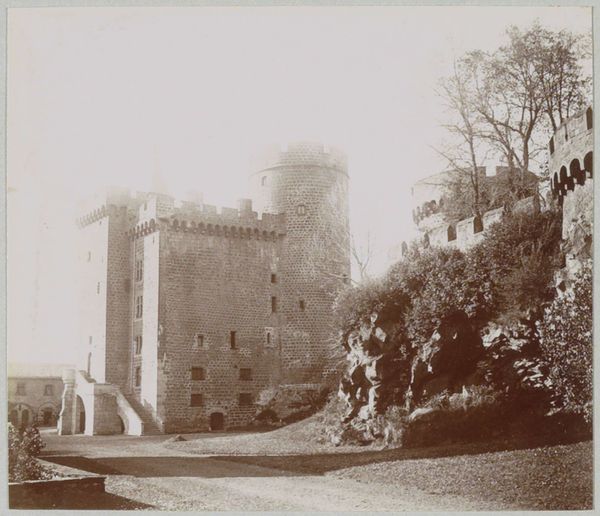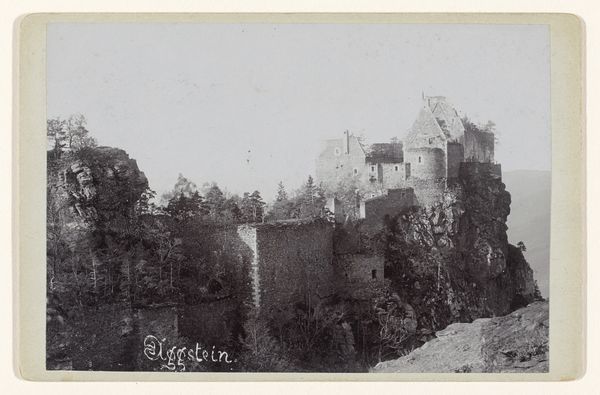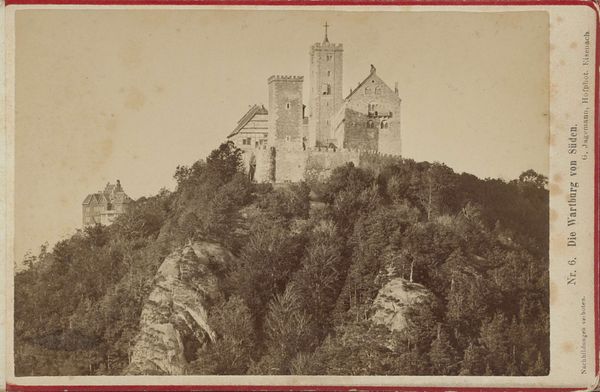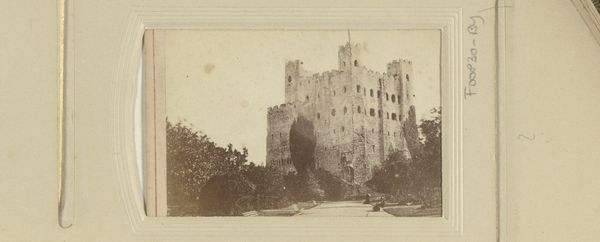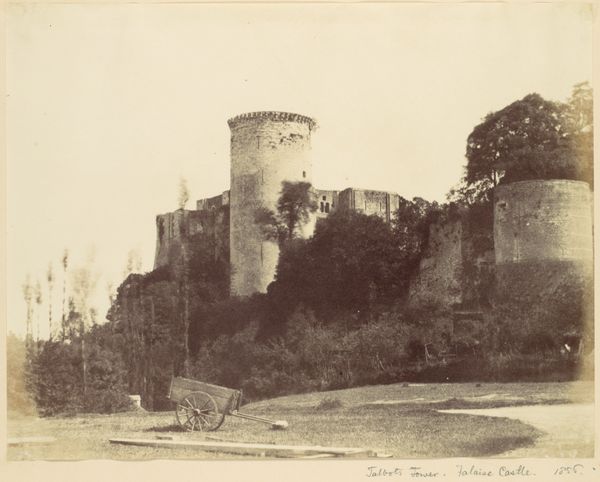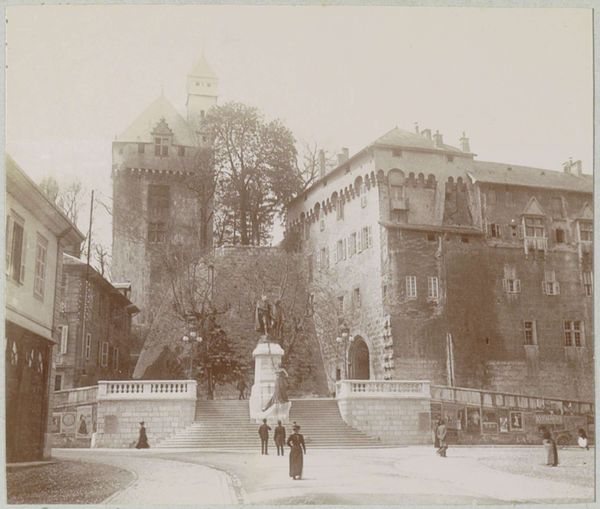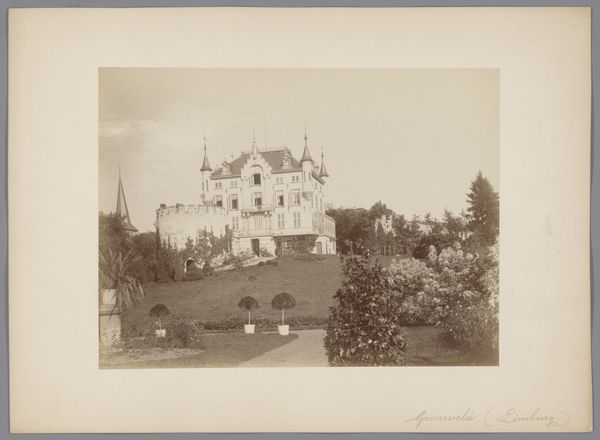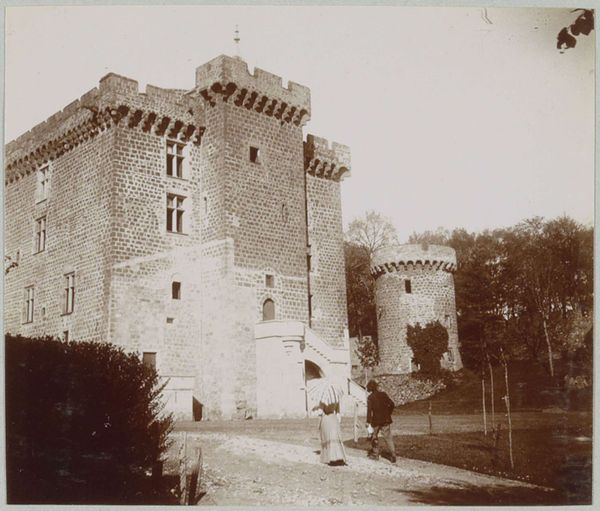
Dimensions: height 97 mm, width 139 mm, height 106 mm, width 160 mm
Copyright: Rijks Museum: Open Domain
Editor: This photograph, "Kasteel Hartenstein in een bosrijke omgeving" by Franz von Prandtstetter, taken sometime between 1866 and 1900, presents a castle shrouded by a dense forest. I'm struck by how the framing of the trees almost seems to be guarding the castle. How do you interpret this work? Curator: This piece evokes a strong sense of Romanticism, but filtered through the emerging lens of realism. Think about the context: the late 19th century was a time of enormous social upheaval. The rise of industrial capitalism was beginning to challenge established hierarchies. The inclusion of the landscape is so common for Romanticism, but note here the lack of grandeur: how does that influence the viewers’ reading of it? Editor: I see what you mean. It isn’t an idealized, sweeping landscape. The castle feels less like a symbol of power and more like… a refuge? Curator: Exactly! The framing—the way the trees nearly obscure the castle—suggests a deliberate act of hiding or protecting. How might we relate this image to broader discussions around national identity or perhaps even a desire for escape amidst increasing social change? This almost melancholic longing for an idealized past. It begs the question: Who did this vision of landscape truly serve and who was deliberately excluded from it? Editor: That’s fascinating. I hadn't considered how photography could be used to create, and perhaps limit, certain national narratives. Curator: Yes, and that's crucial. Consider also how photography was evolving as a medium. Its capacity for “realism” gave it a unique authority in shaping perceptions. Even now, how do we perceive photography's social narrative impact? Editor: It really changes how I see the image, moving beyond a pretty landscape to a deeper understanding of the photograph's potential social commentary. Thank you. Curator: Indeed. Considering art through the lens of social and historical context unlocks layers of meaning we might otherwise miss.
Comments
No comments
Be the first to comment and join the conversation on the ultimate creative platform.
